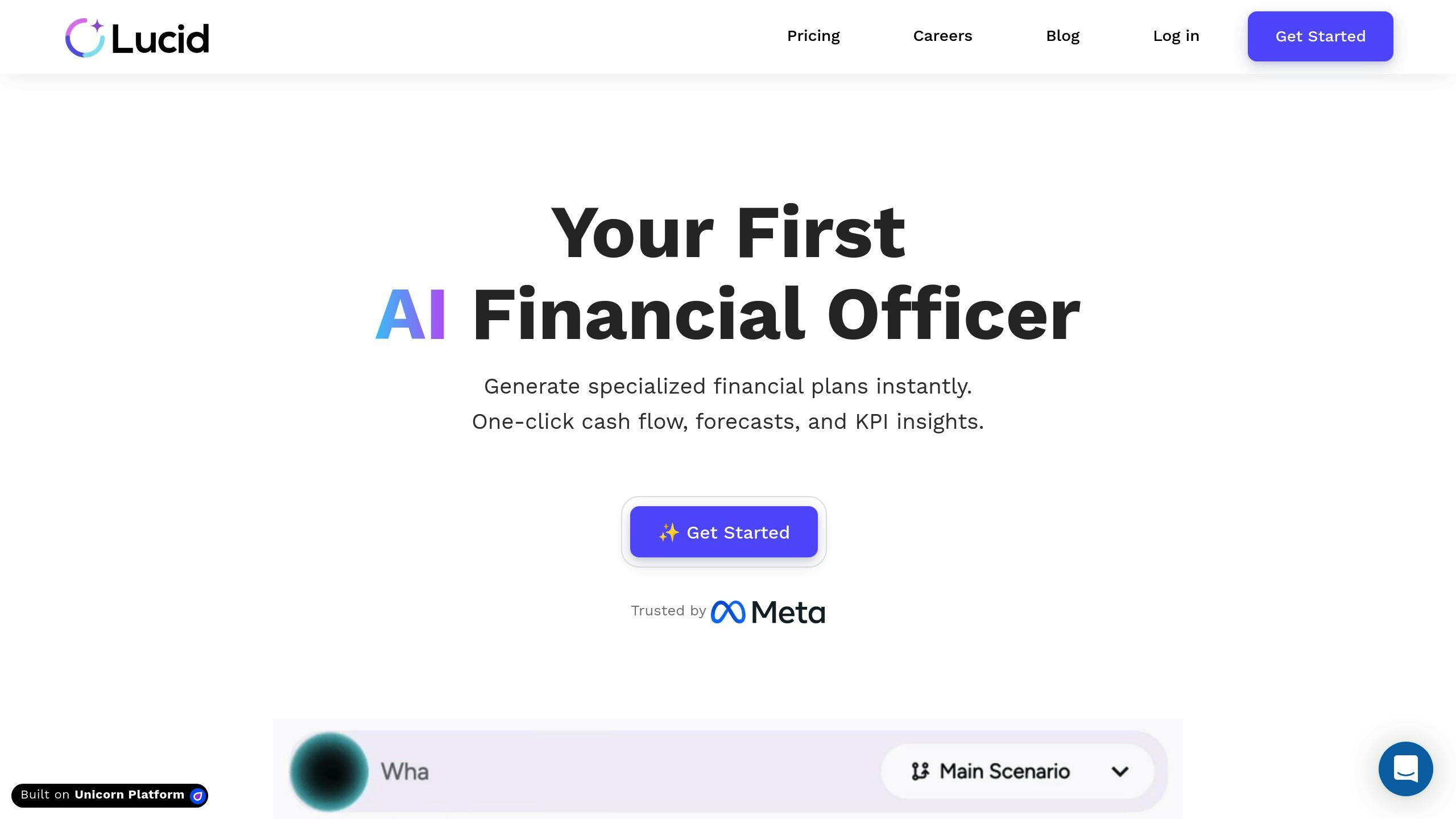Capital structure is how businesses fund operations using debt (loans, bonds) and equity (selling shares). Deciding the right mix depends on factors like cash flow, growth goals, and risk tolerance. Here’s a quick breakdown:
- Debt Financing: Retain ownership, tax-deductible interest, but requires regular repayments (higher financial risk).
- Equity Financing: No repayment burden, brings investors' expertise, but dilutes ownership and profits.
Quick Comparison Table
| Factor | Debt Financing | Equity Financing |
|---|---|---|
| Cost | Fixed interest payments | Share of future profits |
| Tax Benefits | Interest is tax-deductible | None |
| Ownership | Retained | Diluted |
| Risk | Higher due to repayment obligations | Lower, shared with investors |
| Cash Flow Impact | Regular repayments needed | More flexibility |
| Strategic Value | Limited | Investors may offer expertise |
For startups with unpredictable cash flow, equity is often better. Established businesses with stable revenue may prefer debt. Many companies opt for a hybrid approach, balancing the benefits and risks of both. Tools like Lucid Financials can help model and optimize financing strategies.
The Beginner's Guide to Debt vs Equity Financing in Your Capital Structure
Differences Between Debt and Equity Financing
Advantages and Disadvantages of Debt Financing
Debt financing allows businesses to raise funds without giving up ownership. A major perk is that interest payments are tax-deductible, which helps reduce borrowing costs [1]. Plus, you retain full control over your company.
But it’s not without risks. You’re required to make regular repayments, no matter how your business is performing. This can put pressure on cash flow, especially during tough times. Missing payments can hurt your credit score and even threaten your business’s survival [3].
Advantages and Disadvantages of Equity Financing
Equity financing provides funding without the burden of repayment. This lets businesses focus on growth instead of worrying about debt. On top of that, equity investors often bring more than just money - they can offer industry insights, connections, and strategic advice [2].
The downside? You’ll need to share ownership. Selling shares means giving up a portion of future profits and decision-making power. This can limit the founders’ control over the company’s direction [2][3].
To see these differences more clearly, here’s a side-by-side comparison of debt and equity financing.
Debt vs. Equity Comparison Table
| Factor | Debt Financing | Equity Financing |
|---|---|---|
| Cost Structure | Fixed interest payments | Share of future profits |
| Tax Impact | Interest payments tax-deductible | No tax benefits |
| Control | Full ownership retained | Partial ownership transfer |
| Risk Level | Higher financial risk due to repayment obligations | Risk is distributed among investors |
| Access to Additional Capital | Limited by debt capacity | Easier future funding |
| Timeline | Fixed repayment schedule | No repayment timeline |
| Business Impact | Regular cash flow needed for payments | Greater flexibility with cash flow |
| Strategic Value | Limited to capital received | Additional expertise and networks |
Debt financing is often a better fit for established businesses with predictable revenue, while equity financing tends to suit startups aiming for rapid growth but facing uncertain cash flows [1][4].
Scenario Analysis for Capital Structure Optimization
Case Study: Debt vs. Equity Ratios
Take a look at this example of a software startup with $5 million in annual revenue. Two different financing approaches are being compared:
| Metric | Scenario A (70% Debt, 30% Equity) | Scenario B (30% Debt, 70% Equity) |
|---|---|---|
| Monthly Debt Payments | $42,000 | $18,000 |
| Ownership Retained | 70% | 30% |
| Cash Flow Impact | Higher pressure | Lower pressure |
| Financial Flexibility | Limited | Greater |
| Cost of Capital | 8.5% | 12% |
| Risk Level | Higher default risk | Lower financial risk |
A debt-heavy structure (Scenario A) keeps ownership intact but puts more strain on cash flow. On the other hand, Scenario B, with more equity, eases financial pressure but reduces ownership. This comparison underscores the need to weigh these trade-offs carefully when deciding on the right debt-to-equity mix.
Factors Affecting Capital Structure Choice
Several elements play a role in determining the best financing strategy. Below are the key considerations:
Revenue Stability
Businesses with steady income, like SaaS models, can support more debt compared to those with unpredictable sales patterns [6].
Industry Risk Profile
Industries with higher risks often lean toward equity to minimize default concerns, while more stable sectors may prefer debt due to its lower cost [5][6].
Growth Stage and Potential
For companies in rapid growth phases, equity financing is often more practical since it doesn't burden cash flow. As noted by the Head of M&A and Capital Markets at Norwest's Portfolio Services team:
"We typically advise our companies to consider debt on the back of a successful round of equity financing, particularly in a volatile lending environment" [7].
Hybrid Financing Options
A mix of debt and equity, known as hybrid financing, offers a middle ground by balancing ownership retention with financial risk [5].
Cost Considerations
Debt tends to be less expensive due to tax advantages, but equity is often a better fit during high-interest periods or for growth-focused strategies [5][6].
To make these decisions easier, tools like Lucid Financials allow businesses to model and compare financing scenarios in real-time. These simulations can guide companies toward a more effective capital structure.
sbb-itb-17e8ec9
Using Lucid Financials for Capital Structure Planning

Lucid Financials Scenario Planning Features
Lucid Financials simplifies capital structure planning with its suite of AI-driven tools. These tools let businesses explore various debt-to-equity combinations using up-to-date financial data to build precise forecasts.
Here’s a look at the platform's key features for capital structure analysis:
| Feature | What It Does | Why It Matters |
|---|---|---|
| Scenario Modeling | Compares multiple financing options | Helps businesses make informed choices between debt and equity |
| Industry Benchmarks | Provides real-time comparisons to sector averages | Ensures capital structure aligns with industry norms |
| Financial Integration | Connects directly to financial systems and banking data | Delivers accurate, real-time metrics for better planning |
AI-Powered Decision-Making with Lucid Financials
Navigating debt and equity trade-offs can be tricky, especially for startups. Lucid Financials makes this process easier by turning financial data into clear, actionable insights. Its AI tools let businesses model and compare different funding scenarios, analyze cash flow effects, calculate financing costs, and align growth plans with their capital structure.
For more advanced needs, users can simulate hybrid financing strategies. These tools help balance debt obligations with equity dilution, tailoring recommendations to a company’s growth stage and industry needs.
The Professional plan takes things further by offering advanced modeling for mixed funding scenarios. This feature allows businesses to fine-tune their capital structure, striking the right balance between debt and equity based on their specific goals and market conditions.
Conclusion: Choosing the Right Capital Structure
Comparing Debt and Equity Financing
Debt financing lets businesses retain ownership but comes with the responsibility of regular repayments. On the other hand, equity financing eliminates repayment obligations but reduces ownership stakes. Both options have their own pros and cons, and the best choice depends on a company’s goals, financial situation, and long-term plans.
Understanding these differences is key to crafting a financing strategy that works for your business.
Steps for Planning Your Capital Structure
1. Assess Your Current Financial Position
Take a close look at your financial metrics, cash flow, and growth forecasts. Compare your situation with industry standards for debt-to-equity ratios. The right mix often depends on where your business is in its growth cycle and the current market conditions, as well as the financing options available.
2. Develop a Financing Strategy
Strike a balance between debt and equity to align with your business objectives. You might explore hybrid options, such as:
- Bank loans for managing day-to-day operations
- Convertible notes to support growth initiatives
- Strategic equity partnerships to drive long-term success
3. Use Technology to Simplify the Process
Modern tools, like Lucid Financials, can make capital structure planning easier. These platforms allow you to:
- Simulate different financing scenarios
- Compare outcomes for various debt-to-equity combinations
- Access up-to-date industry benchmarks for better decisions
- Integrate your financial data to improve forecasting accuracy
Keep in mind that your capital structure isn’t set in stone. It should adapt as your business grows and market conditions shift. Regularly revisiting and adjusting your financing mix helps maintain financial stability and supports future growth.
FAQs
In which situation would a company prefer equity financing over debt financing?
Equity financing is often the go-to choice for startups and small businesses still working out their revenue streams or facing challenges with cash flow. It's particularly useful when:
- Companies need large amounts of capital to scale quickly
- Revenue is inconsistent or still in the early stages of growth
- They want to bring in investors who can offer both funding and strategic advice
For early-stage businesses, equity financing offers the chance to grow without the burden of regular loan repayments. It also opens the door to valuable industry connections and guidance from investors who may have a vested interest in the company’s success.
To make informed decisions, tools like Lucid Financials can help businesses model various financing scenarios. These tools provide insights into how equity financing might impact long-term growth compared to debt, helping companies choose the best path forward.


